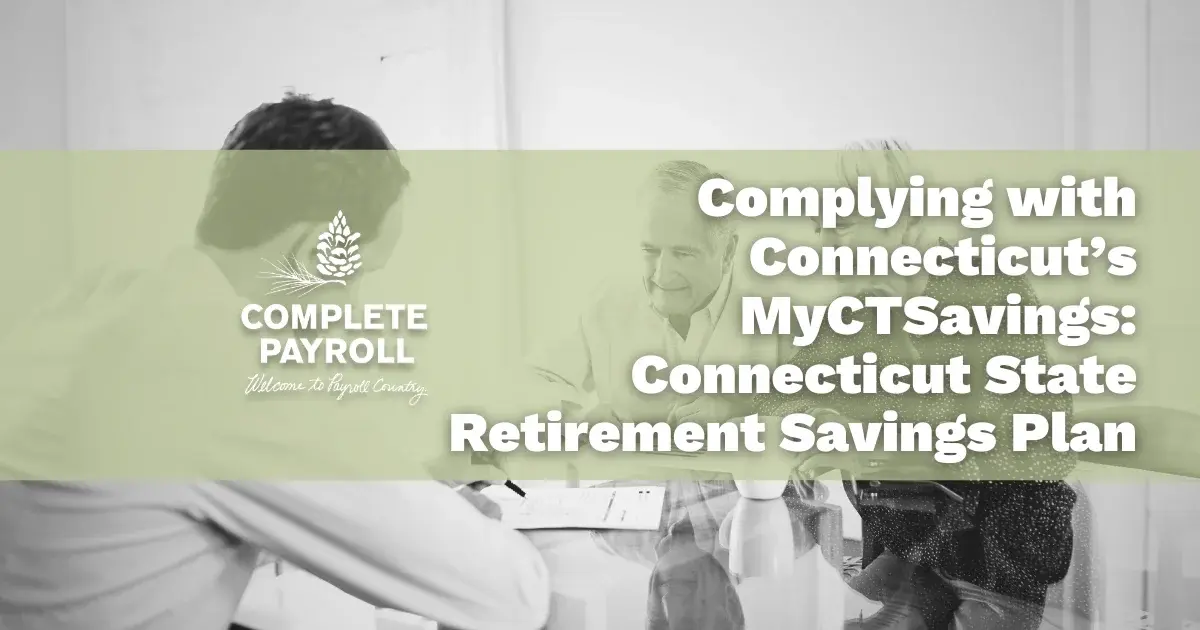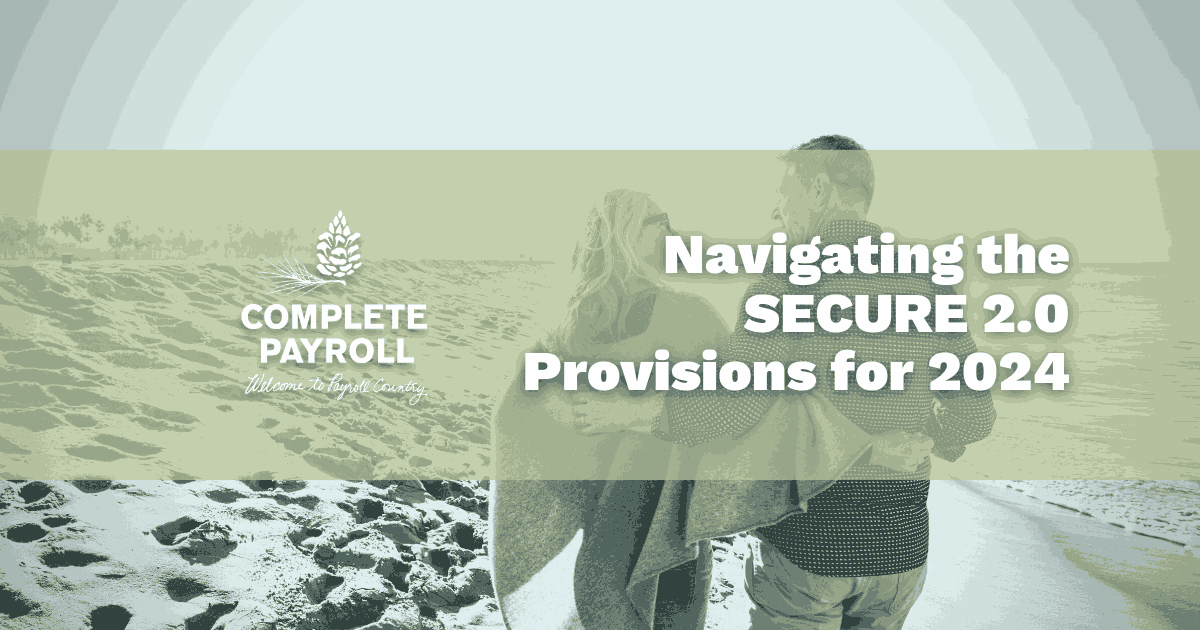Mandatory 401(k) Roth Contributions Under the SECURE Act 2.0
Written by Rick Fish, Jr., C.P.P.
%20Roth%20Contributions%20Under%20the%20SECURE%20Act%202.0%20Banner.webp?width=1200&height=400&name=Mandatory%20401(k)%20Roth%20Contributions%20Under%20the%20SECURE%20Act%202.0%20Banner.webp)
The SECURE Act 2.0 is a new nationwide law that was signed at the end of 2022 with the goal to help better prepare and enhance workers’ retirement plans. This law has provisions that will be carried out over the next couple of years—with some provisions already taking effect in 2024. These provisions will affect retirement plans by rolling out new regulations on mandatory 401(k) Roth contributions, how much workers can save based on their age, and the income tax of their savings.
What Are Mandatory 401(k) Roth Contributions?
Beginning January 1, 2026, this new law states that all SECURE 2.0 Act 401(k) catch-up contributions by eligible workers with income exceeding $145,000 from the prior calendar year must be made to a designated Roth contribution account and cannot be made on a pretax basis. The goal of mandatory 401(k) Roth contributions is to help encourage workers to save for retirement by automatically placing contributions into a retirement plan.
Currently, the amount that you contribute to a Roth account is initially taxed up front, which means contributions cannot be deducted from your taxable income. Then, when you reach retirement age, you can withdraw amounts from your Roth without being taxed since Roth contributions were already taxed up front.
However, this isn’t the case for certain employees under the SECURE Act 2.0. Employees contributing to their retirement plan in 2024 and 2025 can make catch-up contributions pre-tax. But, beginning in 2026, employees who earned over $145,000 in 2025 will have to make SECURE 2.0 Act 401(k) catch-up contributions to a Roth contribution account, with all contributions made on a post-tax basis.
Eligibility and Impact on High-Income Earners
The SECURE 2.0 Act 401(k) mandatory contributions only will affect employees that meet these two main requirements: have earned more than $145,000 in the previous calendar year (2025) and be 50 years of age or older. If an employee meets these two criteria, then all catch-up contributions will need to be made as Roth contributions after-tax.
The catch-up contribution limit currently for IRAs is $1,000 for people over 50. However, as of 2024, that limit is indexed to inflation, meaning based on federally determined cost of living, this limit could increase each year.
The IRS has granted employers a two-year transition period for the provisions of the SECURE Act 2.0 to roll out to encourage a smooth transition. This time will allow catch-up contributions under retirement plans to be treated as satisfying Section 603 of the SECURE Act 2.0 and allow for pre-tax contributions for taxable years before January 1, 2026. This includes contributions that are not designated Roth contributions.
Implications for Employers and 401(k) Plan Administrators
With the rollout of this new law, employers and payroll professionals should stay up-to-date on the SECURE Act 2.0 401(k) provisions, as this will affect their payroll management. Beginning 2026, payroll managers will need to process these mandatory 401(k) Roth contribution requirements on a post-tax basis. In addition, they will need to review who qualifies for 401(k) mandatory Roth catch-up contributions—those who are age 50 or older and who made more than $145,000 in the previous calendar year.
During the two-year transition period until January 1, 2026, any retirement plan not allowing post-tax Roth contributions will not be deemed to violate the new Secure 2.0 Act rules, provided that if catch-up contributions are allowed, then the plan must extend allowance to all employees, regardless of their annual salary threshold.
Preparing for the 401(k) Plan Changes 2026
Additional provisions of the SECURE Act 2.0 include changes beginning January 1, 2025, as well. Let’s take a look at the important dates and adjustments employers should make in both 2025 and 2026.
Key Provisions for 2025
Beginning January 1, 2025, those who are between the ages of 60 and 63 will be able to make higher catch-up contributions than previously allowed. They will be able to make catch-up contributions of up to $10,000 annually, with this amount being indexed to inflation. This is a nice increase from the current catch-up amount of only $7,500 for those ages 50 and older.
Additionally, as of 2025, employers who started retirement plans after December 29, 2022, will be required to automatically enroll employees in their retirement plan at a rate of between three and 10 percent of eligible wages. Employees will be automatically enrolled, but they will have the option to opt-out. Some exclusions for automatic enrollment include new companies under the age of three and employers who have 10 or fewer employees.
Key Provisions for 2026
Starting January 1, 2026, employees making over $145,000 will be required to make their 401(k) catch-up contributions as Roth contributions under the SECURE 2.0 Act.
A good way to prepare for the 401(k) plan changes is to review your current retirement plan options and provide your employees with guidance for this change. While employees over the age of 50 making over $145,000 will be required to make mandatory 401(k) Roth catch-up contributions, any individuals earning $145,000 or less, adjusted for inflation going forward, will be exempt from the Roth requirement.
In addition, employers should fully communicate to all eligible employees about the SECURE Act 2.0 401(k) plan changes beginning in 2026. This will include informing them of their eligibility for mandatory Roth catch-up contributions as well as the provision that all catch-up contributions to a Roth contribution account will be made after-tax.
Ensuring Compliance with SECURE 2.0
The SECURE Act 2.0 is set to be implemented throughout the next couple of years, so employers should know the 2025 and 2026 deadlines as well as the provisions of each year. Employers should prepare for these changes by updating their 401(k) plans accordingly and reviewing these upcoming changes to ensure both their payroll and HR managers are prepared, as well as informing their employees of the 401(k) mandatory Roth catch-up contribution requirements.
To help ensure compliance, businesses should also feel free to reach out to a payroll provider professional to help them navigate and prepare for this payroll change.
Get Instant Blog Notifications
Need Help?
Talk to Us















